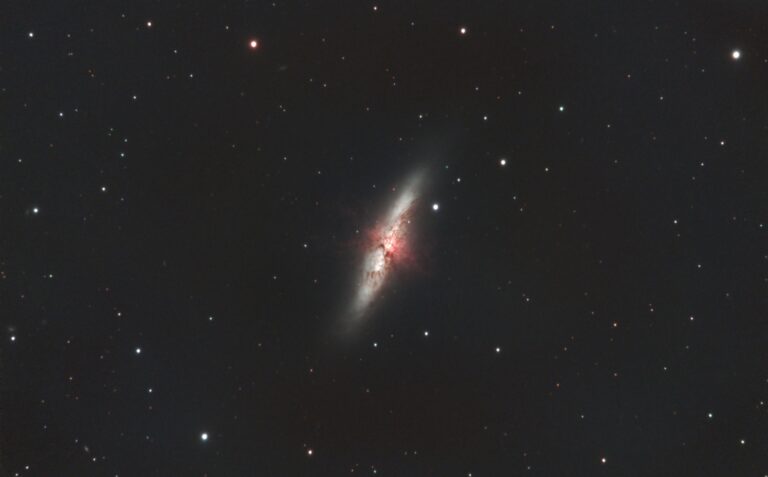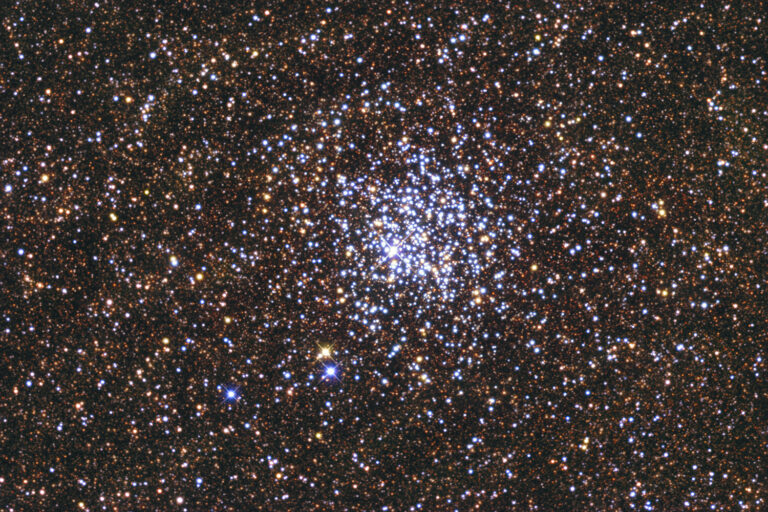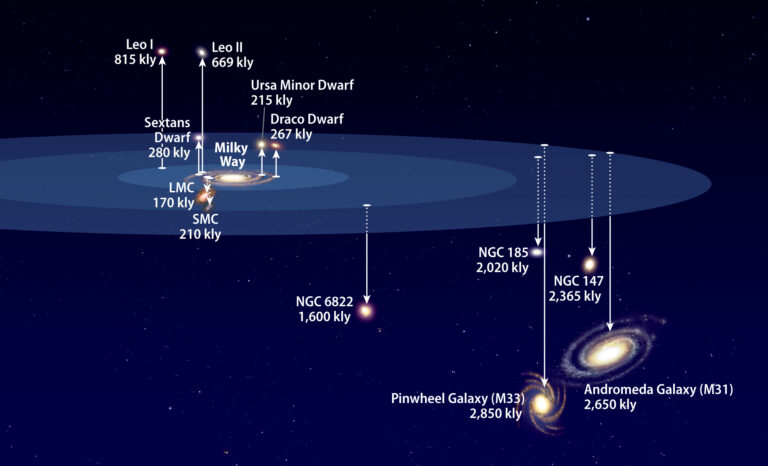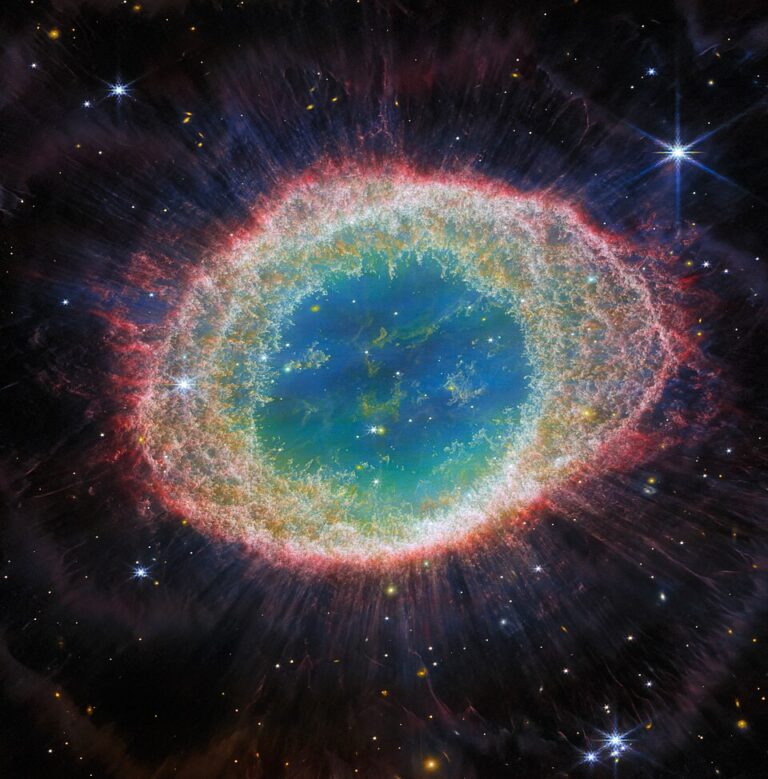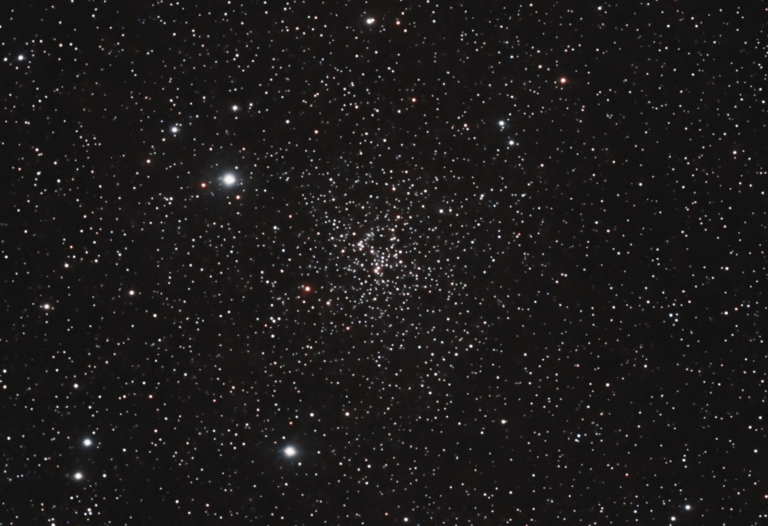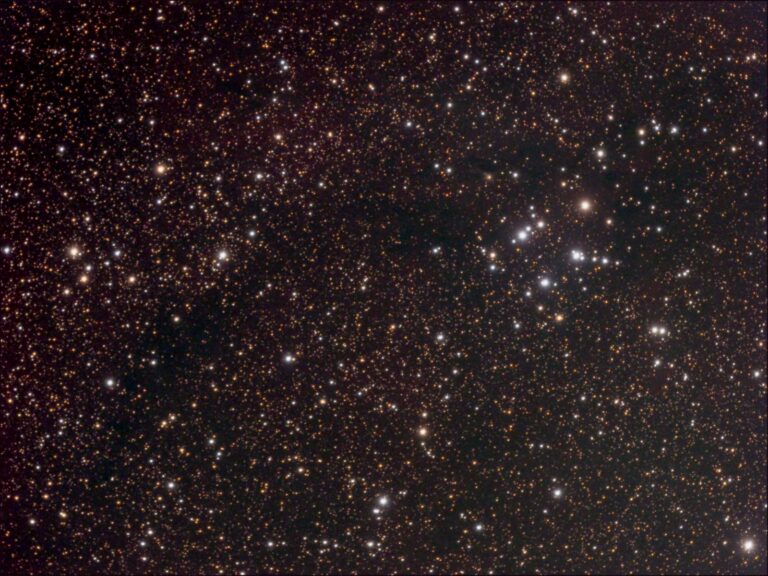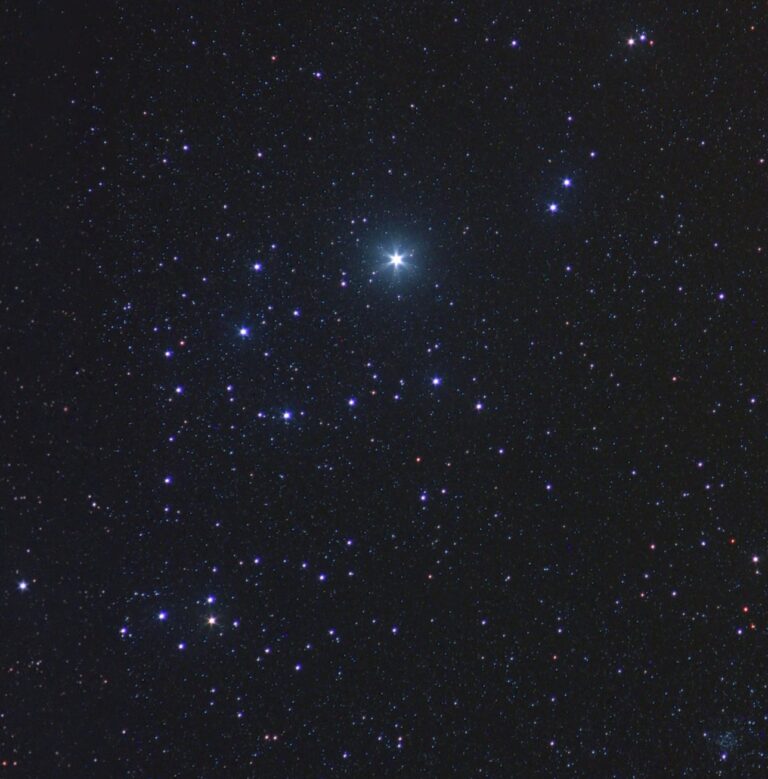Key Takeaways:
No less intimidating for the novice (and even some veteran backyard astronomers) is a star-hop into the portion of the Milky Way that runs through Sagittarius. It’s easy to get lost in this tangle of rich star fields, open and globular clusters, and nebulae. For that reason, we’ll employ the same tactic we used on the Virgo cluster by limiting our excursion to a small area.
Our base of operations is the 3rd-magnitude star Lambda (λ) Sagittarii, the northernmost star in the lid of Sagittarius’ Teapot asterism. I prefer its proper name, Kaus Borealis, because the words hint at some exotic setting. Within a few degrees of “Star Base Kaus Borealis” (see what I mean?) is a quartet of globular clusters — M22, M28, NGC 6638, and NGC 6642. All are within reach of small backyard telescopes.
M22 is the scene-stealer of the four, surpassed in visual grandeur only by the far-southern globulars Omega Centauri and 47 Tucanae. At 5th magnitude, it is just visible with the unaided eye under dark sky conditions and is readily discernible through binoculars as a circular glow. M22 reveals its true stellar nature when viewed telescopically. Even a 4-inch scope will show stars near the cluster’s outer edge, while a large-aperture instrument can resolve M22 to the core. The view in that instance is utterly breathtaking — thousands of glimmering specks spread across an area about the same apparent size of the Full Moon!
If you return to Kaus Borealis and give your telescope a 1° nudge to the northwest, you’ll come across M28. More than 1.5 magnitudes fainter than M22 and just one-third its apparent size, M28 is nonetheless a worthwhile target. In fact, I urge you to visit this cluster before setting your sight on M22. Otherwise, M28 will appear anticlimactic. A tiny fuzzball through binoculars and small telescopes, it begins to show resolution in scopes of 6 inches and larger.
If you live at a mid-northerly latitude like me, you may have overlooked Sagittarius and its deep-sky riches. In my case, I’ve been thwarted by a grove of pine trees that cloaks the southern horizon from my backyard. To rectify this oversight, I plan to get off my duff, load my scopes (one is never enough!) into my car, and drive to a south-facing location.
Once I’m set up, I’ll give our featured Sagittarius globulars the attention they deserve. I’ll begin with M28. Having never viewed this cluster through anything larger than a 4.5-inch reflector, I’ll put my 10-inch reflector to work. Globular clusters appear at their best when viewed with high power. An eyepiece that magnifies 200x will be in order here.
Bidding farewell to M28, I’ll turn my attention to M22 and drink in its visual splendor through the 10-inch. I’m sure I’ll rue the fact that I’ve given this showpiece the shrug for so many years. If the seeing is steady and the southern sky is free of haze or light pollution, I’ll switch to a 2.4-inch (60mm) refractor and attempt a small-scope feat. I’ve partially resolved M22 through a 4-inch reflector. Can I do the same with an even smaller scope? I’ll work with the highest practical magnification for a 2.4-inch scope (typically 100x to 120x — higher yet if the seeing is extraordinarily steady).
Lastly, I’ll set my sight on NGC 6642. I’ve seen NGC 6638 through a small-aperture telescope but never tried for NGC 6642. Can I knock off this Class II Herschel object with a 60mm scope? Is it decidedly fainter than NGC 6638, or did it just miss qualifying for Class I?
And with that, I’ll finally have targeted these Teapot globulars. So if, like me, you’ve avoided a Sagittarius star-hop because of its southerly location or out of fear of getting lost on this Milky Way maze, don’t give up. Just drop by Star Base Kaus Borealis, and let your deep-space adventure begin!
Questions, comments, or suggestions? Email me at gchaple@hotmail.com. Next month: Look at all the pretty sketches! Clear skies!




